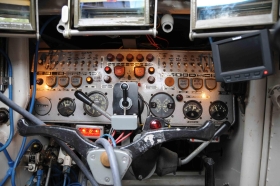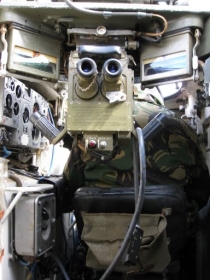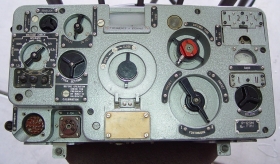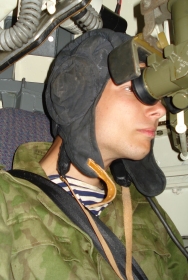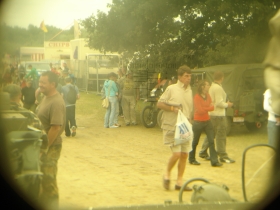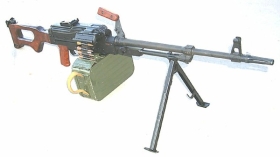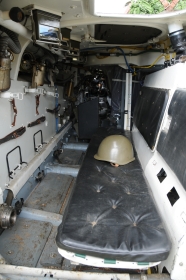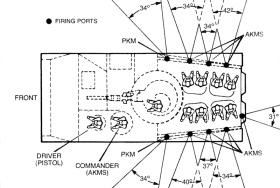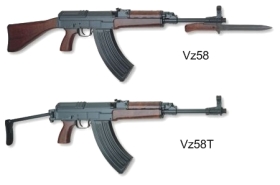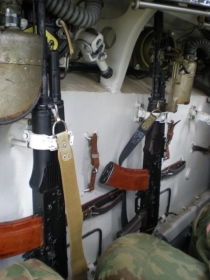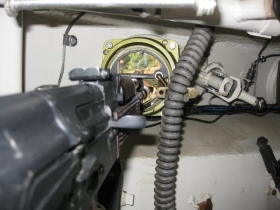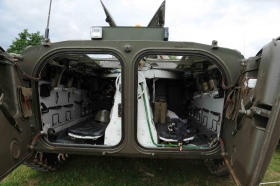Complexity - or Simplicity?
Let us start by looking at the forward most position in the vehicle - the drivers (where I spend my time!). For a fully detailed explanation of what the individual controls are for please refer to the instruction manual found in the "Related Documents"link to the left. For this section we will deal in generalities. Looking at the instrument panel it can be seen that the controls fall more or less into four primary groups:
| Defense and Protection NBC controls, smoke discharger controls etc. Oil prime pumps and engine preheat controls |
Fire suppression Extinguisher controls and warnings. Door and hatch open warnings |
Ancillary controls Lighting (internal & external) main isolator, gyro compass and engine start buttons - air and electric |
| Engine instrumentation - Rev Counter, Speedo, Temp Gauges,Ammeter, Hour meter |
||
Immediately in front - and blocking the view of the Speedo in the picture above is the indicator switch and the High/Low transmission range selector.
Below and to the right is the gear lever - 5 forward speeds + reverse Use of the clutch is required when stopping and starting, however once the vehicle is moving the gears can be selected/changed up or down without using the clutch.
At the forefront of the picture is the tiller bar used to steer the vehicle - movement of this will affect the vehicle in different way depending on where the High/Low range selector is. If High is selected then the more the bar is pressed to one side or the other the tighter the vehicle will turn as track braking is progressive. If Low is selected then only hard turns - i.e. max braking on the inboard track are possible.
Below the High/Low selector is a rectangular red light - this is the handbrake warning light, It is possible to drive off with the handbrake still applied - at the risk of a serious fire in the engine bay. Below this again - and hidden by the tiller bar - is the gyro compass,
The lever at the lower right of the picture in the blue pipe work is the pneumatic control for raising the forwards swim vane and the snorkel behind the turret. Not visible to the right are the levers that shut the solid vent flaps over the inlets when used in an amphibious mode. Also hidden in this picture is the lever that swings the drivers hatch over and locks it into the closed position.
The grey lead hanging over the tiller bar is the fixed side of the intercom lead - the intercom is discussed below - which is secured by a screw-in plug at the junction box and had a "D" shaped quick release plug at the other end. The drivers hatch is a circular one approx 900mm in dia and swings over to ones side when open ,locking ito the open position. In action or when in amphibious mode the drivers seat base lowers rapidly so that the hatch can be shut and locked own. No provision is made for a personal weapon for the driver other than a pistol in a belt holster.

